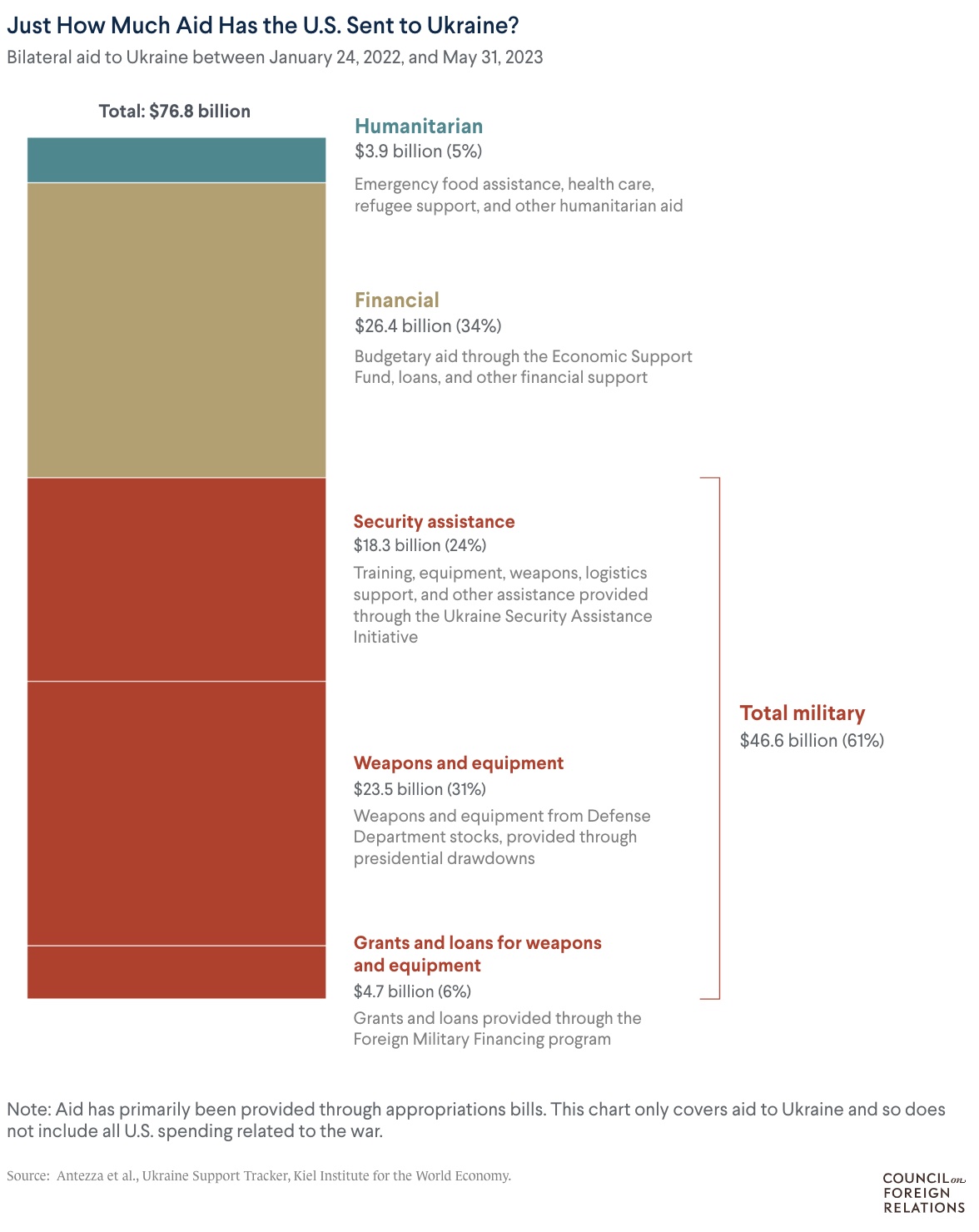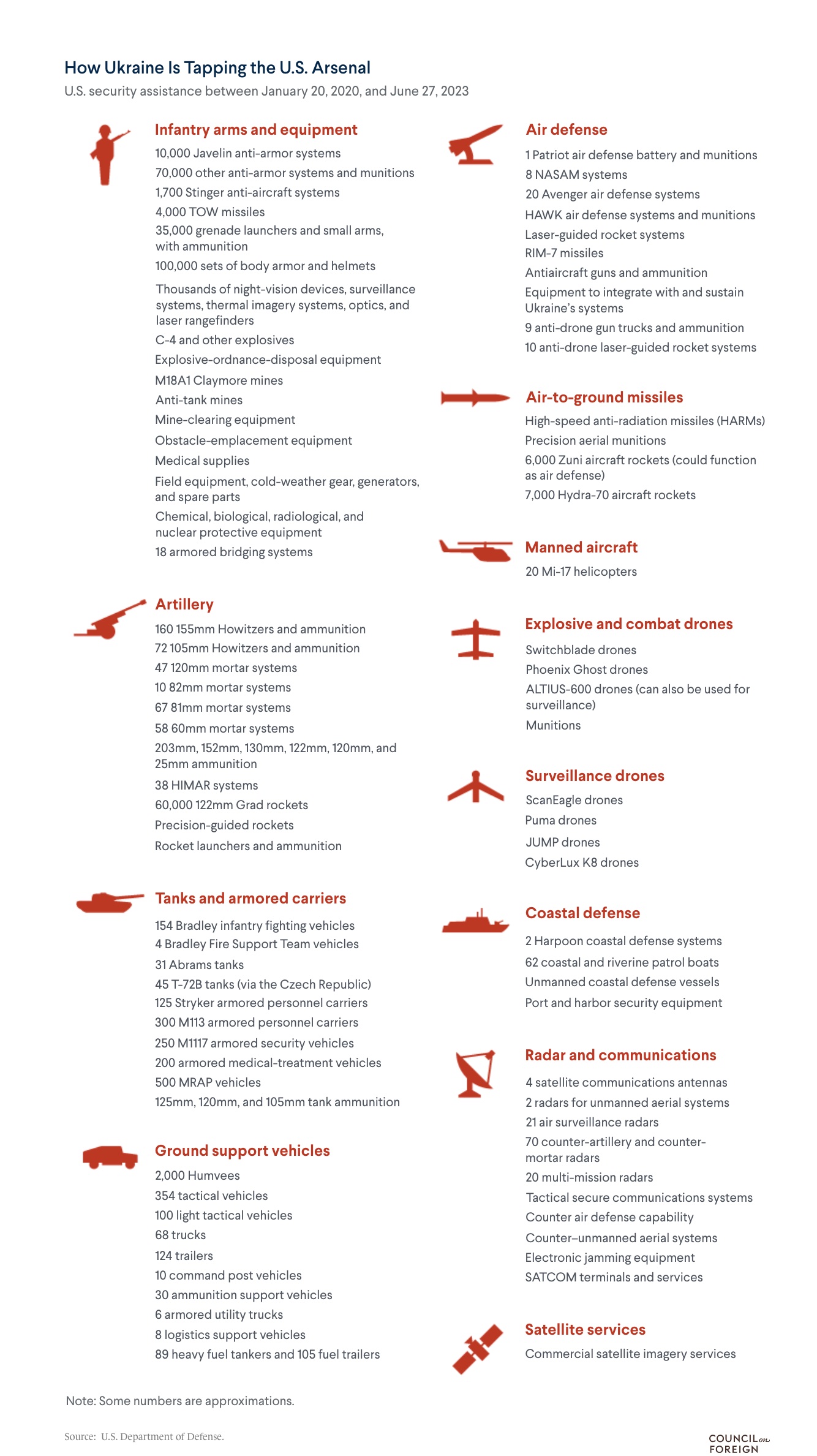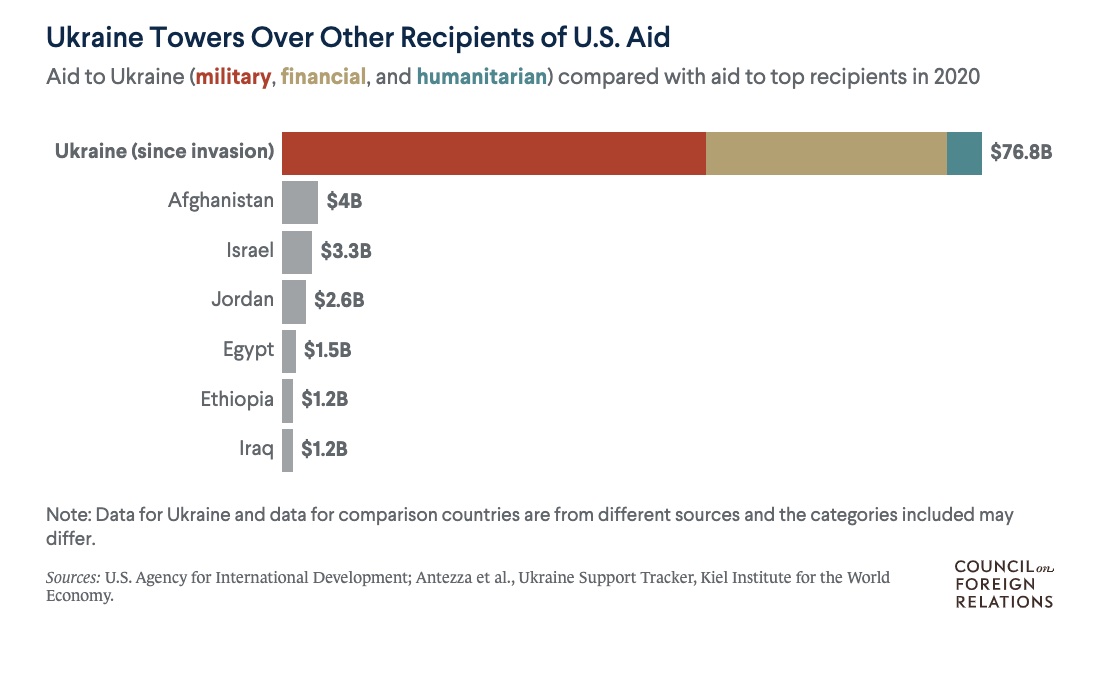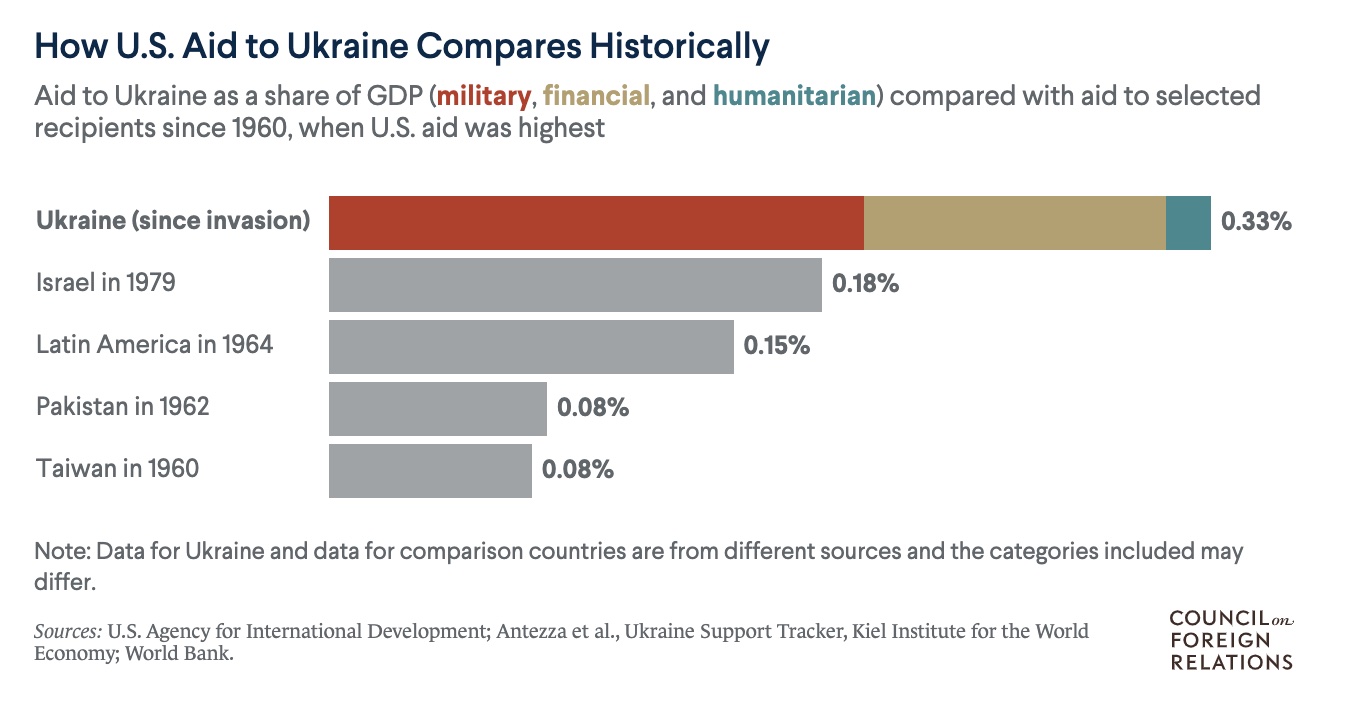Six graphics illustrate the extraordinary level of support the United States has provided Ukraine in its war against Russian invaders.
Every year, the United States sends billions of dollars in aid—and much more than any other country—to beneficiaries around the world in pursuit of its security, economic, and humanitarian interests.
Heading into 2022, U.S. foreign assistance was driven by various priorities of the Biden administration, including combating climate change, responding to the COVID-19 pandemic, and countering authoritarianism. But since Russia’s invasion in February of that year, Ukraine has become far and away the top recipient of U.S. foreign aid. It’s the first time that a European country has held the top spot since the Harry S. Truman administration directed vast sums into rebuilding the continent through the Marshall Plan after World War II.
Since the war began, the Biden administration and the U.S. Congress have directed more than $75 billion in assistance to Ukraine, which includes humanitarian, financial, and military support, according to the Kiel Institute for the World Economy, a German research institute. The historic sums are helping a broad set of Ukrainian people and institutions, including refugees, law enforcement, and independent radio broadcasters, though most of the aid has been military-related. Dozens of other countries, including most members of the North Atlantic Treaty Organization (NATO) and the European Union, are also providing large aid packages to Ukraine.

Much of the aid has gone toward providing weapons systems, training, and intelligence that Ukrainian commanders need to defend against Russia, which has one of the world’s most powerful militaries. Many Western analysts say the military aid provided by the United States and other allies has played a pivotal role in Ukraine’s defense and counteroffensive against Russia. U.S. and allied leaders consider Russia’s invasion a brutal and illegal war of aggression on NATO’s frontier that, if successful, would subjugate millions of Ukrainians; encourage Russian President Vladimir Putin’s revanchist aims; and invite similar aggression from other rival powers, especially China.
From our partners:
NATO allies are particularly wary of being pulled directly into the hostilities, which would dramatically raise the risk of a nuclear war. However, as the fighting has progressed, many donor governments have shed their reluctance to give Ukraine more sophisticated assets, such as battle tanks and modern fighter aircraft. In May 2023, the United States indicated it would allow its European allies to provide Ukraine with U.S.-made F-16s in the coming months.
Seventeen months into the war, the Biden administration had provided or agreed to provide Ukraine with a long list of defense capabilities, including Abrams battle tanks, anti-aircraft missiles, coastal defense ships, and advanced surveillance and radar systems. In July, the Biden administration sparked some controversy in agreeing to supply Ukraine with cluster munitions, which are banned by most countries because of the risk their undetonated components can pose to civilians many years after their use.

When compared with U.S. assistance to other top recipients, both in recent years and in decades past, the extraordinary scale of this aid comes into view.


However, the magnitude of U.S. aid to Ukraine might seem less remarkable in comparison to what the Pentagon is budgeted each year, or what the Treasury was authorized (via the Troubled Asset Relief Fund) to bail out Wall Street banks, auto companies, and other sectors of the economy during the U.S. financial crisis.

When compared with the critical support to Ukraine from other countries, the size of U.S. aid stands out.
However, some European governments, such as Latvia and Estonia, are making larger financial contributions to Ukraine relative to the size of their own economies.
Article by Jonathan Masters and Will Merrow
Chelsea Padilla and Joseph Wehmeyer contributed research to this article.
Republished from CFR.













